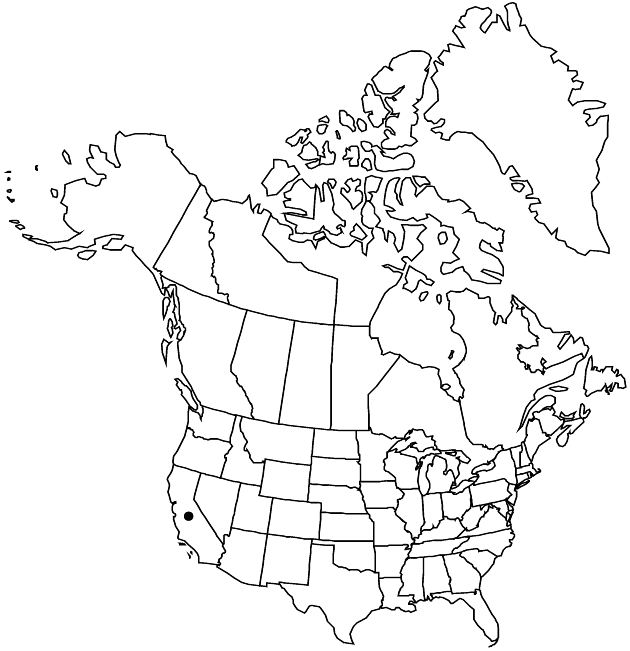Hazardia cana
Pittonia 1: 29. 1887.
Common names: San Clemente Island bristleweed
Basionym: Diplostephium canum A. Gray Proc. Amer. Acad. Arts 11: 75. 1876
Synonyms: Haplopappus canus (A. Gray) S. F. Blake
Revision as of 19:57, 29 July 2020 by imported>Volume Importer
Shrubs, 60–250 cm. Stems lanate-tomentose. Leaves subsessile or subpetiolate; blades oblanceolate, 4–12 × 1–4 cm, thin, bases not clasping, margins serrulate to subentire, abaxial faces densely short-tomentose, adaxial glabrate or glabrescent. Heads in thyrsiform arrays. Involucres broadly turbinate, 7–10 × 5–8 mm. Phyllaries erect, oblong, apices acute, faces of outer loosely woolly-tufted apically. Ray-florets 6–14, fertile; corollas shorter than involucre, inconspicuous. Disc-florets 15–25; corollas 5–8 mm. Cypselae 3–4 mm, canescent. 2n = 10.
Phenology: Flowering Jun–Sep.
Habitat: Rocky canyon walls
Elevation: 200–500 m
Distribution

Calif., Mexico (Baja California)
Discussion
Hazardia cana is known from San Clemente Island.
Selected References
None.
Lower Taxa
None.
No values specified."fine" is not a number.
... more about "Hazardia cana"
short-tomentose +
introrse +
connate +
distinct +
herbaceous +
acute +
scarious +
hirsute +
papillate +
thyrsiform +
continuous +
not clasping +
decurrent +
1-nerved +
elliptic +
oblanceolate +
ribbed +
stigmatic +
reddish-brown +
persistent +
20;30 +
absent +
San Clemente Island bristleweed +
red-purple +
absent +
inconspicuous +
ampliate +
4-5-nerved +
dimorphic +
canescent +
3mm;4mm +
staminate +
straight +
woolly-tufted +
resinous +
gland-dotted +
distinct +
proximal +
1;5 +
bisexual +
dispersed +
singly +
indeterminate +
surrounding +
turbinate +
alternate +
cauline +
spreading;erect +
triangular +
not scarious +
2-carpellate +
inferior +
attached +
anatropous +
persistent +
tough +
thick +
absent +
connate +
1-nerved +
persistent +
distinct +
herbaceous +
falling +
erect +
oblong +
unequal +
Pittonia +
1887 +
pistillate +
absent +
fertile +
epaleate +
pitted +
concave;usually flat;conic +
fibrous +
exalbuminous +
modifed +
1;2 +
alternate +
branched +
erect +
lanate-tomentose +
triangular +
2-branched +
glabrous +
Hazardia cana +
Hazardia +
species +
tubular +
longer +
perennial +